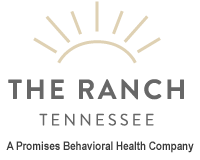Sunlight stimulates the production of endorphins-the chemicals that give us a boost of happiness and energy. As a result, it’s no wonder many people prefer sunny days to overcast ones, and why clouds and rain have come to be associated with gloom. If sunlight helps people to feel happy, it’s only natural that days with less light leave many people feeling a bit less chipper, a bit less energetic, and little bit less excited to get up and go. When people have prolonged bouts of sadness, low energy, and other depression-like symptoms during certain times of the year, they are often diagnosed with a condition known as seasonal affective disorder. This condition is particularly common in regions of the far north that experience extremely short days during the winter, or in areas that experience near constant cloud cover and rain during those months. But what is seasonal affective disorder, really? If it is a natural chemical response to less sunlight, is it really a disorder? Is it a genuine form of depression, or a normal response to the changing of the seasons?
Understanding Seasonal Affective Disorder
Researchers are still working to determine the exact cause of seasonal affective disorder, but they do believe that seasonal affective disorder is a genuine form of depression. As such, it occupies an unusual middle ground between situational depression and chronic depression. While it seems apparent that seasonal affective disorder does have a specific cause related to the changing of the seasons, it is also a chronic condition from which many people will suffer year after year for a certain set of months. The winter months do not affect every individual in the same way, and seasonal affective disorder is far from a universal complaint from people in high-risk areas. This fact adds credence to the idea that this condition is a genuine disorder rather than a natural chemical fluctuation. In this respect, seasonal affective disorder seems to behave in a similar way to situational depression: certain events trigger an unnatural and unhealthy chemical change in the brains of some, but by no means all, of the individuals who experience them. The seriousness of the symptoms associated with seasonal affective disorder also supports the belief that this is not a natural change. The symptoms of the condition are similar to those of other forms of depression, with a few characteristic differences. As with other forms of depression, seasonal affective disorder sufferers are likely to feel sad, grumpy, or anxious, or experience mood swings. However, seasonal affective disorder is more likely to cause individuals to sleep more and feel drowsy throughout the day, and to make people crave carbohydrates and gain weight. In contrast, other forms of depression are more likely to cause sleeplessness, and loss of appetite leading to weight loss. The reasons for these differences in symptoms are not fully understood. However, they are very useful for doctors who need to differentiate between the different forms of depression in order to make a diagnosis. Correctly diagnosing seasonal affective disorder is important, because the treatment for this form of depression is often different than the treatment for chronic or situational depression.
Treating Seasonal Affective Disorder
The most common treatment for seasonal affective disorder is light therapy. Light therapy involves the use of a light box to expose patients to similar wavelengths to those of sunlight (with ultraviolent light largely filtered out to avoid the potential for skin damage.) Light therapy may involve sitting in front of a light box for a period of time each day, or it can involve a simulated dawn in which a light box grows steadily lighter throughout the morning to simulate the sun rising. This form of treatment has been shown to be highly effective for most people suffering from seasonal affective disorder. It is also a significantly less expensive treatment than the antidepressant medications or counseling that are necessary to treat other forms of depression. The small percentage of people who do not respond to light therapy for their seasonal affective disorder will usually take antidepressants. This form of treatment is usually equally effective, but it takes longer to show positive results in addition to being more expensive. Some individuals may also try counseling to help them understand and manage their symptoms.
